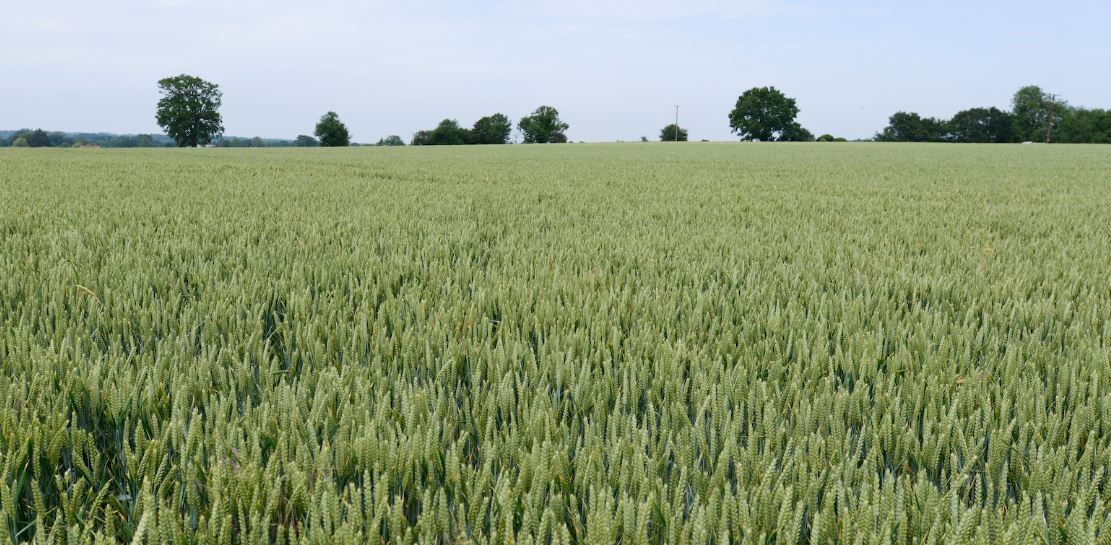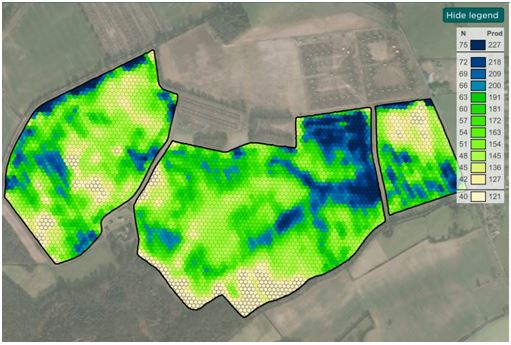Milling wheat - final decisions
As I write this, glancing out of the window to look at blue skies over dry soil, it's all too easy to forget the extremely wet autumn and winter we all endured. Clearly, this posed a massive challenge for establishing autumn crops and has led to one of the smallest winter wheat areas we've seen for decades.
It did, though, also cause large amounts of mobile nutrients like nitrogen and sulphur to be leached out of the soil, meaning we started spring growth with very low levels naturally available. Indeed, soil measurements taken at the end of last year indicated that the Soil Nitrogen Supply (SNS) in virtually all situations would be one to two indices lower, which translated to an increased need for fertiliser nitrogen of between 30-50kg/ha to make up for the shortfall.However, this did need to be balanced against a possible reduction in yield potential and associated nitrogen demand, given the extreme conditions and later drilling.
For milling wheat growers especially, this did and continues to pose a real conundrum in terms of nitrogen rates and programmes for this spring.
As you can see in the table below, yield has a massive influence on the amount of nitrogen that a crop needs to take up to achieve the full 13% protein specification.This is not just the amount of applied nitrogen fertiliser required as this also includes residual soil nitrogen, but sadly we know that the latter isn't used at 100% efficiency.Indeed, on average, it's only 60% efficient and this year could have been affected even more by the extremely dry conditions during application in April and May.
So, what's the potential yield?
As you can see from above, this is a big question to try and answer.Clearly, it is impossible to be exact and relies heavily on future weather given that 60% of overall biomass and, ultimately, yield is produced after the flag leaf has fully emerged.
However, tiller number and biomass imagery – as available within MySOYL – can help, along with a big dose of local knowledge to give some indication of yield potential.This can then be used alongside the figures above and the low SNS indices to review where you are in terms of nitrogen rates.
At the same time, it would be sensible to measure the nitrogen content of your flag leaf, either by tissue testing or using a N-Tester to determine the current status of the crop.All this information can be used to assess if extra nitrogen is required to reach the top milling specification which, this year, could be worth a significant amount of premium with such a small area of wheat in the ground.
Soil or foliar N?
If it is thought that more nitrogen is needed, should it be soil-applied, via solid or liquid application, or as a true foliar product?
At this stage (flag leaves emerging), there is still time for more soil-applied nitrogen to improve grain protein but it remains only a small window of opportunity as the current dry conditions are not favourable for crop uptake from the soil.However, it is worth saying here that if you do plan to make a final soil application it would be very sensible to variably apply this based on current biomass, with the larger areas receiving more to counter the risk of yield diluting the protein.
This then leaves the foliar products. These can make a significant improvement to grain protein but it is important to understand the options and their limitations.
Generally, the protein increase they contribute will be in the region of 0.5 to 0.75%, so it is important that your soil-applied nitrogen programme is sufficient to get to at least 12% protein; ideally 12.5% if you are targeting 13% protein.Therefore, simply applying a foliar product after a normal feed wheat base program will not generally work, especially as yields increase.
The choice of product is between a basic foliar urea and a formulated product like Multi N.More nitrogen is applied with foliar urea to increase the protein, but it does potentially have drawbacks.It can cause crop scorch which hits yield and it is also prone to nitrogen losses, either as ammonia gas volatilised off the leaf surface or because of its inherent lack of rainfastness.
Multi N, on the other hand, applies less nitrogen but is formulated to remove these losses and improve crop uptake, delivering the same amount of nitrogen into the crop without the risk of scorch.It also supplies a significant amount of sulphur, which could be very useful this year given the low soil sulphur levels and therefore likely low levels in the plant, which can restrict protein production.
Conveniently delivered in an IBC, Multi N requires no specific liquid storage and the low use rate of 40lts/ha (with 100-150lts/ha of water), coupled with being rainfast in 30 minutes, means it is very easy to apply.
Over the coming weeks it's vital for those of you with milling wheat to evaluate the potential of your crops as they develop and to remember that, in terms of yield, there is still a long way to go; roughly 40% of biomass is produced after ear emergence. Of course, good crops could yield very well if the sun continues to shine and we get enough rainfall.
Foliar nitrogen products, like Multi N, are already integral on many farms but they could be an even greater component for getting enough nitrogen into crops this year.
As a subscriber, you’ll receive email alerts each time a new blog is published so you can always stay updated with the latest advice and insights from our experts






Comments